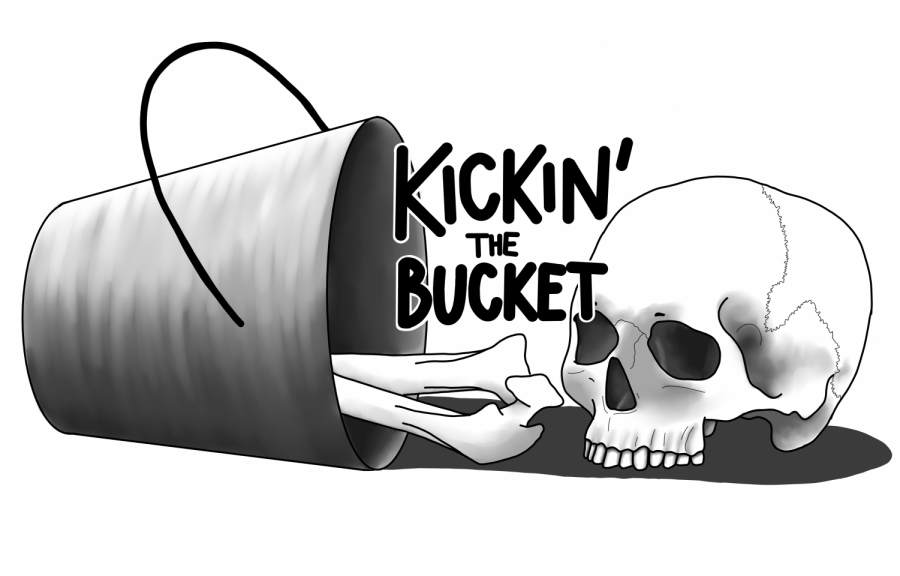Kickin’ The Bucket | Sex and gender in the bones
Kickin’ The Bucket is a bi-weekly blog about death, dead things and the people who work with them.
September 9, 2021
Gender binary. You know, girls like dolls, makeup and the color pink, and boys like dinosaurs, trucks and the color blue. Americans — who seem to think we’re literally God’s gift to all of humanity — try to push our patriarchal ideals and norms onto others’ cultures and histories. While this “push” may be subconscious, it affects how we analyze the past.
The same goes with burials. To the untrained eye, a burial may look like a skeleton and some dusty artifacts, nothing much different than Target’s clearance section after Halloween. But archeologists can determine an incredible amount of information from a burial.
Factors such as sex, age, occupation and ailments can come from just a skeleton, and grave goods — artifacts buried with the remains — can provide a more detailed story. But analyzing burials isn’t as straightforward as it seems.
In Birka, Sweden, researchers found a Viking grave containing a skeleton, an arsenal of weapons, a gaming set and two horses, one with a bridle still equipped. They presumed the grave belonged to a prominent male Viking warrior, but more than a century later, osteologists and a genetic analysis confirmed the remains to be female.
Another grave, located in Tuscany, Italy, contained a skeleton with a spear and ashes. Previously thought to be an Etruscan prince with the ashes of his wife, bone analysis revealed the skeleton to be female.
Archaeologist Susan Stratton found that projecting gender norms and binaries onto burials causes archeologists to miss important data. Starting around 5,000 BCE — the Late Neolithic and Copper Age — communities started burying their dead with grave goods, such as weapons, jewelry and precious metals. According to Stratton, while archeologists found that men were often buried with weapons and women with jewelry, there was a significant cluster of burials that did not fit this categorization due to bone or artifact deterioration, or lack of grave goods. These clusters were thus ignored in the research because of their inability to fit the archeologists’ binary.
Not only does this projection of gender norms affect archeological and historical analysis, but it also ignores remains that cannot be sexed or fall out of the gender or sex binaries.
To fill the gap, Stratton used multiple techniques to uncover an individual’s social categories and roles and found that the so-called “binaries” actually overlapped more than expected. Women could be buried with weapons, and men could be buried with jewelry — who would’ve thought.
Similarly, in Hasanlu, Iran, researchers ran grave goods from 51 graves through an algorithm to see which goods were found frequently together and why. The algorithm found that grave goods were sorted into three categories — male, female and a third category with mixed goods.
While researchers cannot confidently say this third category belonged to a certain sex, gender or occupation, the strong correlation and polarization between male and female remains and specific grave goods show that gender identity played a signifcant role in burial practices. It is also unknown if this third category was a matter of individual identity, or a social category made for gender-nonconforming people.
Fluidity in gender, sex and gender norms is not new, and never was new. Our modern, patriarchal, binary society just has to realize it and get okay with it.








